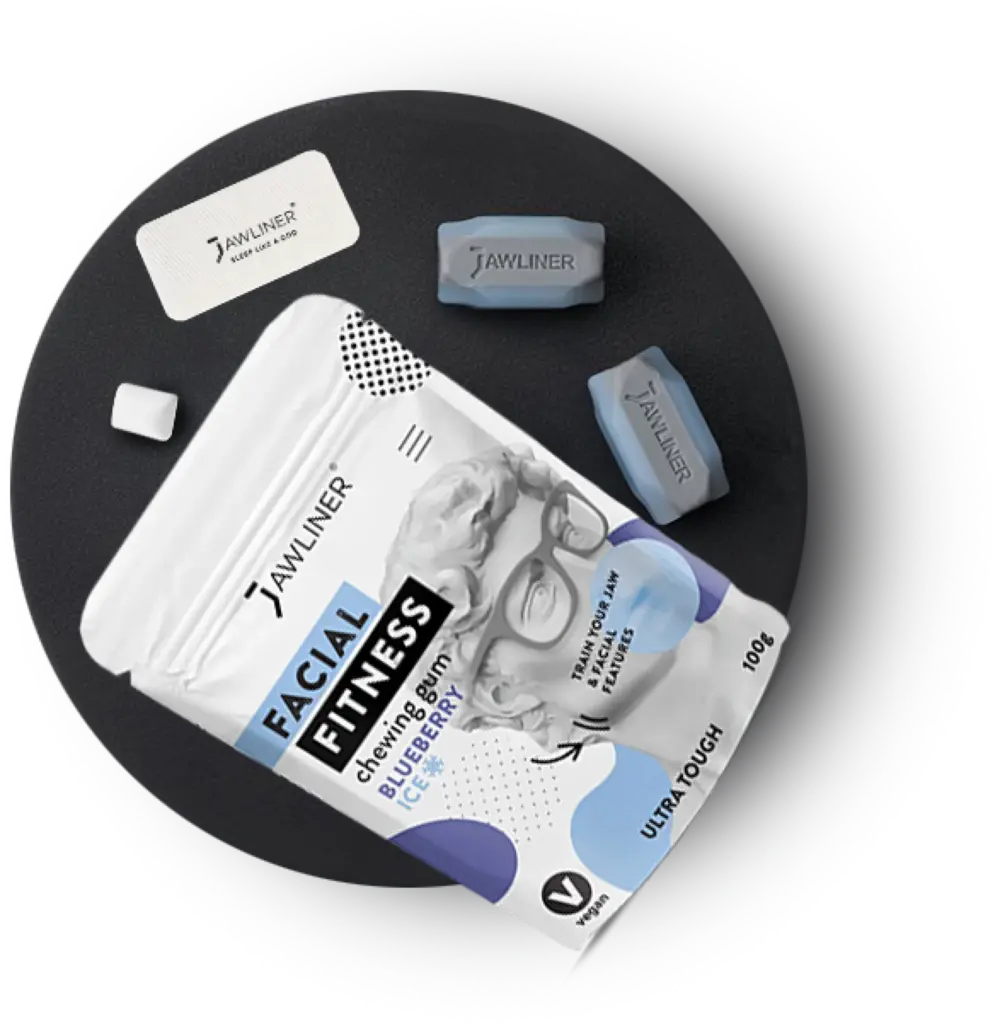Many people talk about the perfect training plan, but hardly anyone actually follows through with it. Without structure and a clear concept for your training, you'll never know whether your workout is making you stronger or whether your fitness is stagnating. With a clear training plan, you can measure your progress, build muscle in a targeted manner, and soon see real results.
Whether you train at the gym or at home, the key is to increase your training regularly. A little more weight, one more clean repetition, one extra set. You'll get the best results if you know why you're doing something and don't just train for the sake of it.
Full-body training, split plan, push-pull? Here you can find out what training plans are available and how to create your own muscle building training plan.
Structure in training – it determines your progress
You can train hard and still not build visible muscles. If you do different exercises every time, don't control the intensity in a planned way, and train without a goal, the training will have no effect and your body will not change.
A structured training plan brings system to your training. You know
- which muscle groups are being worked on and when,
- how many sets you need,
- when to plan for recovery,
- and when to increase the weight.
This is the only way your body will respond with real muscle growth. This has nothing to do with excessive control, but with clarity. Those who know what they are training train better – those who plan become stronger. Whether it's strength training, endurance or a combination of both: without a plan, progress is a matter of luck. With a plan, it is guaranteed.
How to create your training plan step by step
Before you start, set your goal: Do you want to build muscle, lose fat or gain more strength? Only when you know where you want to go can you structure your training in a meaningful way.
Step 1: Check your requirements and equipment
Before you start, check your physical requirements. Do you have any injuries or weak points that you need to be aware of? If so, adjust your training accordingly. You don't need a professional gym – the right setup is enough: a weight bench, a pull-up bar, a few weights. The key is to perform each exercise in a controlled manner and feel your body instead of just moving weight.
Step 2: Plan your training frequency and scope
How often you train depends not on your ambition, but on your everyday life. If you work full-time or have a family, five or more training sessions per week are hardly realistic – and, to be honest, not necessary.
Three to four sessions are perfectly sufficient for building muscle and making steady progress. The key is not how often you train, but that you do so regularly. Keep your volume at a level that you can maintain in the long term. It's better to train consistently than to give up after two weeks because you're burned out.
Step 3: Divide muscle groups into specific categories
Divide your training logically:
- legs,
- back,
- chest,
- shoulders,
- arms.
Each muscle group needs regular stimulation, otherwise muscle growth will stagnate. A full-body training plan is suitable for beginners, while advanced athletes benefit from split plans such as push/pull/legs.
Step 4: Determine sets, repetitions, and intensity
For effective muscle building, train at medium intensity, with controlled load and clean repetitions. 3–4 sets per exercise with 8–12 repetitions are ideal.
More volume does not automatically mean more progress – too much training can even have the opposite effect. When you overtrain, your body does not have time to recover and build new muscle mass. You will be constantly tired, lose performance, and risk injury.
Step 5: Plan for recovery and nutrition
Muscles grow during rest, not during training. Your body needs time to repair damaged fibers and become stronger. Plan fixed rest days, get enough sleep, and consciously take time to recover. Recovery is an important part of your training plan, not a luxury.
Nutrition is just as important. In order for your body to build muscle, it needs building materials: especially protein, healthy fats, and complex carbohydrates. Without these energy sources, even the hardest training is of little use.
Calories from good sources provide your body with what it needs for muscle growth—too little slows down your progress, too much ends up as fat on your hips.
💡 Tip: During the build-up phase, you can safely consume slightly more than you burn – around +10% excess calories will help your body build new muscle mass efficiently.
Progress comes from balance: challenge yourself, regenerate, come back stronger
Sample training plan for beginners and advanced athletes
A training plan only works if it fits into your everyday life. Here are three examples for beginners or advanced athletes on how to structure your muscle-building training in the gym or at home
Full-body training plan – the classic for beginners
Perfect for anyone who trains 2–3 times a week. Each training session covers all major muscle groups.
This keeps the body in balance and is ideal if you don't have much time.
Example exercises:
- Squats – 3 sets × 10 reps
- Pull-ups (or rowing with dumbbells) – 3 × 8–12
- Bench press – 3 × 10
- Shoulder press – 3 × 10
- Abdominal crunches – 3 × 15
Train at medium intensity, focus on proper form, and increase the intensity as soon as the repetitions become easy.
Equipment tip: A weight bench, two dumbbells, and a pull-up bar are all you need to get started with your full-body workout at home.
Push/Pull/Legs – the 3-split for consistent progress
The 3-split divides your workout into three units that you train alternately:
- Push: Chest, shoulders, triceps – for example with bench presses, shoulder presses, and dips
- Pull: Back and biceps – with pull-ups, rowing, and curls
- Legs: Lower body, glutes, and core – with squats, lunges, and leg raises
This allows you to train each muscle group specifically while giving it enough time to recover. Three to four training sessions per week are enough to steadily become stronger.
Keep the intensity consistently high: 3–4 sets of 8–12 repetitions per exercise are optimal. Increase the weight as soon as you can master the last repetition in a controlled manner – this will allow you to make visible progress with each session.
4-day muscle building plan for advanced athletes
Those who train regularly and want to further shape their body will benefit from the 4-day plan. It allows for higher intensity and more targeted exercise per muscle group.
Unlike full-body training, you work with more specific areas of focus. You train individual areas in isolation, can specifically compensate for weak points, and increase the volume per muscle group.
Breakdown:
- Day 1: Chest / Triceps
- Day 2: Back / Biceps
- Day 3: Legs / Shoulders
- Day 4: Rest
- Day 5: Full body
This plan is ideal for advanced and professional athletes who want to systematically increase their strength over a period of about twelve weeks. Twelve weeks is considered the proven duration for a complete training cycle in muscle building—long enough to see progress in strength and muscle mass, but short enough to keep the intensity high and avoid plateaus. Start with a weight that you can lift cleanly 8–10 times. If you can no longer lift cleanly on the last repetition, you're at the right level.
Pro tip: A good coach or training partner helps to avoid technical errors – especially with heavy weights.
Full body, split, or bodyweight – which plan is right for you?
There is no such thing as a perfect training plan. The important thing is to stick with it. So choose a plan that suits you, your goals, and your everyday life.
Advantage of full-body training – minimal effort, maximum effect
Ideal for beginners and anyone with a busy schedule. Two to three training sessions per week are enough to challenge the whole body.
This saves time, provides structure, and is perfect for building stable muscle mass.
Advantage of split plans – more focus on individual muscle groups
If you've been training for a while, split plans (e.g., push/pull/legs) give you more control. You can increase your intensity and target each muscle group more specifically. For advanced and professional athletes, this is the best way to compensate for weaknesses and become stronger in the long term.
Training plan for weight loss – lose fat, maintain muscle
A training plan for weight loss works differently than a classic muscle building plan. The goal is to lose fat without losing muscle mass. Muscles are your most important ally when it comes to losing weight.
The key is not hours of cardio, but intelligent strength training. Keep your intensity as high as possible to maintain your muscles. The more muscle you have, the higher your basal metabolic rate – meaning your body burns more calories even when at rest.
Supplement your training with everyday exercise: take lots of steps every day, climb stairs instead of taking the escalator, keep moving. This low-intensity training keeps your body in fat-burning mode without overloading you.
When it comes to nutrition, the rule is: more protein, less excess. Protein protects your muscles, keeps you full longer, and even increases your calorie consumption through the so-called thermal effect. Combined with a moderate calorie deficit and sufficient recovery, fat melts away – without a drop in performance or muscle loss.
The forgotten muscle – why your face should be part of your training plan
You train hard, complete your workouts, see progress, but something is missing in the mirror. Your body is defined, your muscles are visible, but your face remains undefined. This is exactly the point that almost everyone in the gym overlooks: the jaw.
The masseter is one of the strongest muscles in the entire body – stronger than the biceps or chest when it comes to pure strength. Nevertheless, it does not appear in any full-body workout. Yet it is this muscle that determines whether your face looks striking, masculine, and athletic – or undefined and tense.
Muscle building doesn't end at the shoulders. The face is just as much a part of training as the rest of the body. It's the first thing people notice. It reflects your expression, your energy, your presence. You can change your clothes, but you always wear your face. And no beard in the world can hide it if the contours are missing.
A strong body without a defined jawline looks unbalanced. This is exactly where jawline training comes in: it brings balance to your appearance by applying the same building principles you know from the gym to your face.
The harmonious connection between body and face is what makes up the overall impression. The best athletes and professionals therefore pay attention to every detail. So if you want to reach your full potential, don't just train for mass or endurance, but also your jawline.
Jawline training with a system – your training plan for your face
The jaw is like any other muscle: if you challenge it properly, it will grow. The only difference is in the type of training, and that's exactly what the JAWLINER is for.
With targeted jaw training, you activate the masseter muscle and get your face in shape. Start with the JAWLINER 3.0 – available in different levels of hardness to suit your level.
For beginners, a short session of 2–3 sets of 20 repetitions each at medium intensity is sufficient. Advanced users gradually increase the resistance and train 3–4 times a week.
Safety is important: no jerky movements, no excessive pressure. Overtraining is just as counterproductive here as it is in the gym. Plan breaks, make sure you perform the exercises correctly, and give your muscles time to recover.
If you want to expand your routine, use the Jawline Gum as well. It is ideal for short training sessions in between – for example, while driving or working – and keeps the muscles active without overloading them.
A complete training plan also shapes your jawline
With a clear training plan, controlled exertion, and regular jawline training, you can visibly strengthen your masseter. Just as you build muscle in the gym, you can shape your jawline specifically and effectively with the JAWLINER.
If you want to go even deeper, this article provides eight specific exercises for the jaw area—with movements that you can do right away without any equipment:
👉 Exercises for the jaw area—8 movements for a better jawline
FAQ – Frequently asked questions about training plans & jawline training
How long does it take to see visible results with a training plan?
The first visible changes appear after about 6–8 weeks, depending on training intensity, nutrition, and recovery. It is important to remain consistent and give your body time to adapt.
How many rest days should you plan per week?
At least two rest days per week are ideal to avoid overtraining. During this time, your body regenerates, builds muscle, and replenishes its energy stores.
Can I build muscle and lose fat at the same time?
Yes, it works, but only with a good balance of strength training, endurance, and a balanced diet. The key is a slight calorie surplus or a small deficit that leaves enough energy for muscle building.
What mistakes should you avoid when building muscle?
Training too often, lack of recovery, and poor nutrition are the biggest obstacles. Your fitness and muscles grow through the alternation between exertion and recovery, not through constant training without a break.
How often should you train your jawline?
To start with, 2–3 sessions per week at moderate intensity are sufficient. Like any other muscle, the masseter needs breaks to recover and become stronger.
When will you see results from jawline training?
Depending on your starting point and training frequency, the first effects usually become apparent after 3–6 weeks. Regular jaw training shapes the muscle slowly but visibly. Consistency is key here.
Can jawline training be combined with normal strength training?
Yes, absolutely. Jawline training can be easily integrated into any routine. It works great on rest days or after a workout. This creates a holistic approach in which the body and face become stronger together.






